Spotlight on Aimee Dilger
Oct 19, 2017
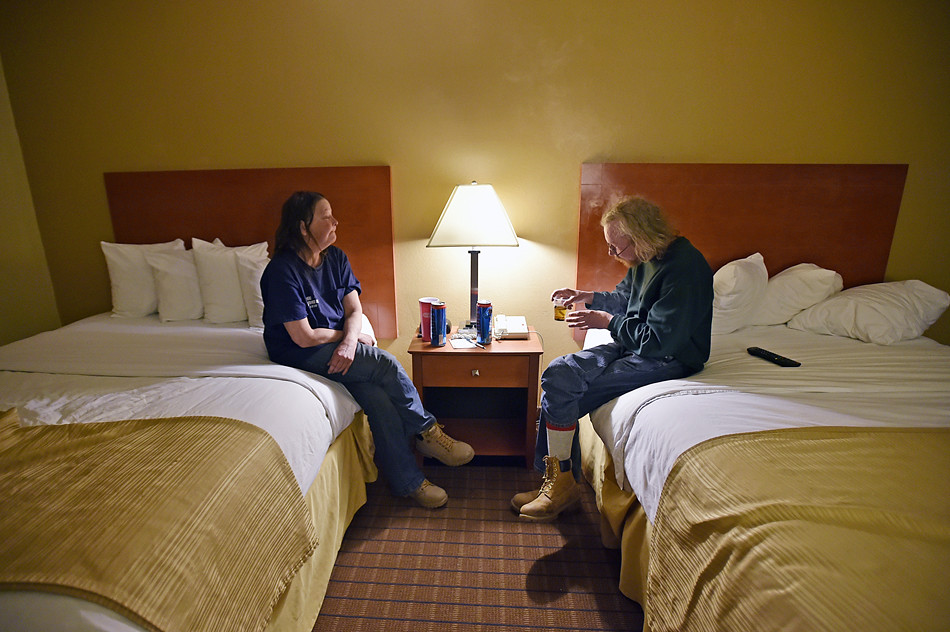
TID:
This is a solid image from an intense and tragic story, Aimee. Can you tell us some of the backstory?
AIMEE:
First let me thank you, Ross, for being interested in learning about this project, I love The Image, Deconstructed. This story was really years in the making, I met Lynn eight years ago when I was leaving work and she was looking for cigarette butts behind the newspaper. I startled her and she startled me more, then she began sobbing because she saw she had frightened me. Her face was cut up and I started talking with her and it turned out she had been assaulted by a man she was staying in an abandoned place with. She had at the time been homeless for a while. We chatted for quite a while, she told me about the breast cancer she suffered with and her children, the work she did as a union electrician and of course Dave her homeless friend that looked out for her. She hadn't been able to find him and he had her medication in their shared bookbag. I was surprised but she didn't ask for help or money, just a hug. I remember hugging her and then heading home.
TID:
Covering projects over long periods of time can be tough. A big part of this is how it’s initiated and framed out - can you talk about how you started this and why?
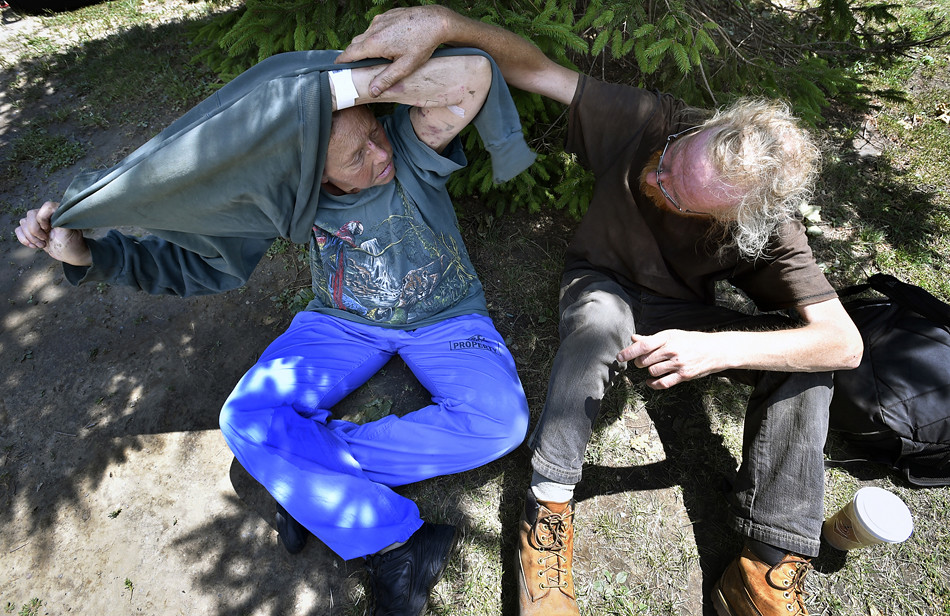
AIMEE:
The next day at work I talked to my chief photographer and he said it sounded like a great story. I was unable to find them for a while but then when I did we spoke about everything. I didn't make any pictures; for years actually. I would see them on the street and they were always drunk but in relatively good health. I could see neither was going to change, and I just wasn't comfortable telling their story because it was so sporadic when I would find them. I took a very long time before I knew I should tell this story.
TID:
Did you talk about how often you would photograph her/them?
AIMEE:
When I finally knew I should start documenting them they were very comfortable around me. I remember explaining that I wanted to tell their story, and I explained how as a photojournalist I would spend time with them, and they should continue their life. I wanted to not affect them in any way. We discussed their regular day, where I might be able to find them. This was the most challenging part of the process, because I would lose them for weeks at a time.
I would wait for them at the soup kitchen and I became pretty well known with many in the homeless community as well as a few police officers that would keep me posted if Dave or Lynn were locked up.
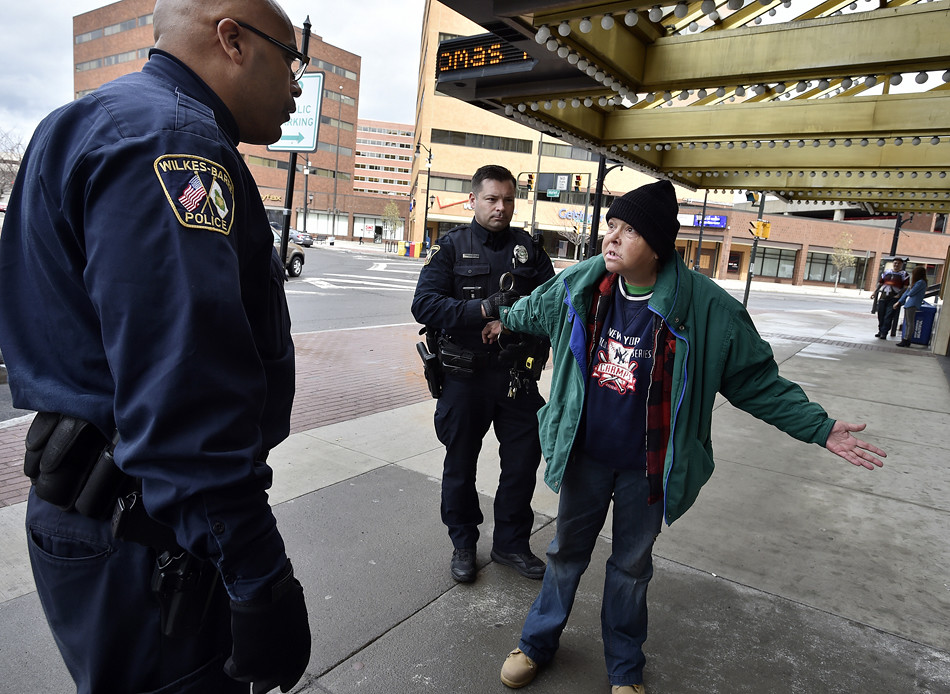
TID:
The picture in the bathroom is intense. Can you talk about how you photographed this moment (and why she let you)?
AIMEE:
Yes, it is intense. Lynn's health had been failing for a few months and her belly kept filling up with fluid. She was staying in a hotel when she wanted to show me her belly, she had the feeling the fluid was due to the past cancer and at that time she lifted her shirt to look at the mastectomy scar. This is one of those pictures you see and think, oh my goodness, how was the photographer able to get this access. It was years of being around and building trust.
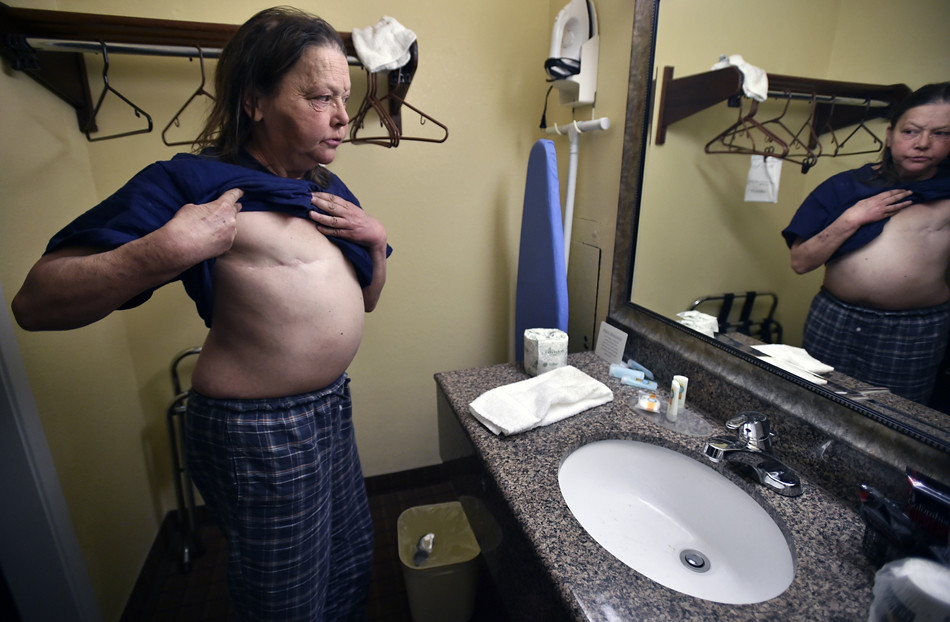
TID:
I’m always intrigued by photographer’s use of body language and verbal language. Can you talk about your approach to the project with this in mind?
AIMEE:
I spoke to them as I would speak to anyone. I really tried to stay in the shadow while they went about life. I didn't want to put myself into the story in any way. Sometimes they would joke around and include me, but I would try and stay quiet.
TID:
I think photography is so much about problem solving. Can you talk about what problems you faced, and how you worked to overcome them?

AIMEE:
The biggest problem was staying in contact with them, but other issues were some of their friends were quite ill mentally and violent or angry - being around them was uncomfortable. When they were staying in the rooming house I was a bit afraid for my safety. I would stay in touch with a friend frequently if I was going somewhere unsafe. I was very comfortable with Dave and Lynn but the people they associated with really worried me at times. Lynn ended up in prison for quite some time so I tried and was granted limited access to her to finish the story.
TID:
Staying in contact with them was difficult. How did you maintain your contact with her?
AIMEE:
Yes, staying in touch was the biggest problem, I knew where they slept under a bridge, and during a few weeks when the weather was frigid they were put up in a rooming house and a hotel. I would look for them at the soup kitchen. I knew some of their homeless friends, and I developed a good relationship with a few police that kept an eye on Lynn and Dave. Towards the end of the story, I was hearing ambulance calls to pick Lynn up frequently.
TID:
Where there aspects of covering the project that surprised you?
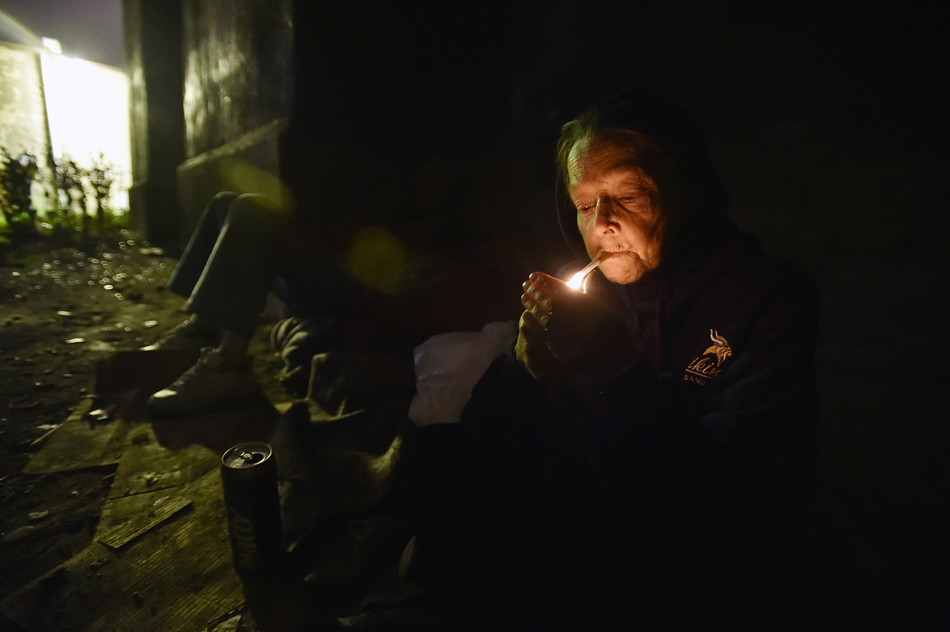
AIMEE:
I don't know that I'd say I was surprised but more discouraged. Lynn and Dave were afforded every opportunity to change. Over the 18 months I spent documenting them, they were taken to get drivers licenses 3 times, because that was a constant excuse why they weren't working. In the end, I found out Dave never really had a job. He had been floating through life since high school. After Lynn's cancer, she chose to leave behind a life for pain meds and alcohol. In the start, I really believed they were trying to turn things around and wanted better than life on the street.
TID:
What have you learned about yourself in covering projects like this?
AIMEE:
I have learned so much. Working on this has made me more confident in my storytelling. I learned that building trust, no matter how long it takes, is worth it. Even if you're not taking pictures you're getting closer, you're getting the story. Listening pays off ten-fold, and the more time you put into something, the more you'll get out of it. I learned that stories change.
TID:
What role do you think mental health played into their situation?
AIMEE:
I’m sure they both suffer from mental illness. Dave's life has been a series of bad decisions where Lynn had a life, a family, job, home and suffered a tragedy. Her way of handling it through drugs and alcohol made her lose everything. Her family tried to help her for years and now have given up on her. This is the life Lynn chose.
TID:
Were there times they asked you not to photograph, and if so, how did you handle it?
AIMEE:
In the beginning, they sometimes asked me not to photograph them and I would respect that. I spent a great deal of time with them and I think I really did become a “fly on the wall” to the point they let me shoot anything.
TID:
Now, onto the moment. Can you talk about the main image, and the moments leading up to it?
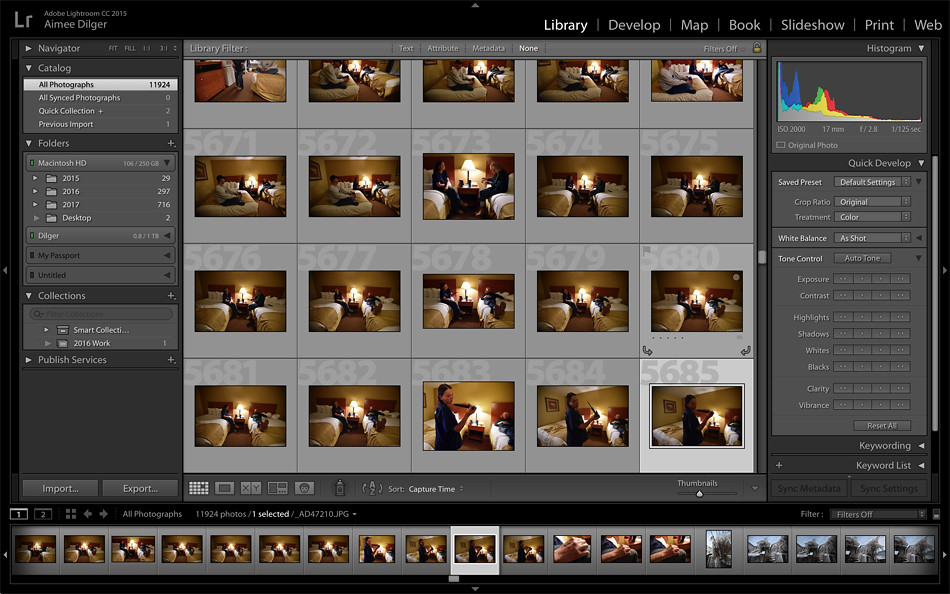
AIMEE:
The main image of Dave and Lynn sitting on beds in a hotel smoking cigarette butts was a very important time in the story. It was February and many homeless were rounded up and put in any available rooming houses and hotels because temperatures were below freezing. They were both still getting around easily and in good spirits. The two were as happy as could be because they knew they'd be able to sleep in warm beds and shower. This moment was right before falling over the cliff for them, both of their health declined rapidly followed by many stays in overnight lock up county prison.
TID:
We clearly don’t want to add to the pain of others, so, I’m always curious how photographers move with respect towards the plight of others. What advice do you have for photographers who want to work with people in these tough situations?
AIMEE:
One of the things I thought about, but I wish I had thought of more, was Lynn's family. They have been hurt by her choices. I was in contact with her sister and nephew during the time I followed Lynn and they knew what I was doing. Lynn has a daughter and a son that during the time I followed Lynn became paralyzed, Lynn wanted to visit him but the family would not allow it. When the story ran some of the family were upset and brought up her paralyzed son. I don't know that I would have done anything differently, but I do feel for them.
I treated Dave and Lynn with dignity and respect, and many times told them my purpose ,and explained they may not like the way they look when the story comes out, but it will be honest. They wanted me to tell their story.
:::BIO:::

Aimee Dilger is a news photographer/videographer for the Times Leader in Wilkes-Barre, Pennsylvania since 2004. When not working she can be found at Soccer fields, baseball fields and basketball courts with her two very active boys. You can see more of her work here:
